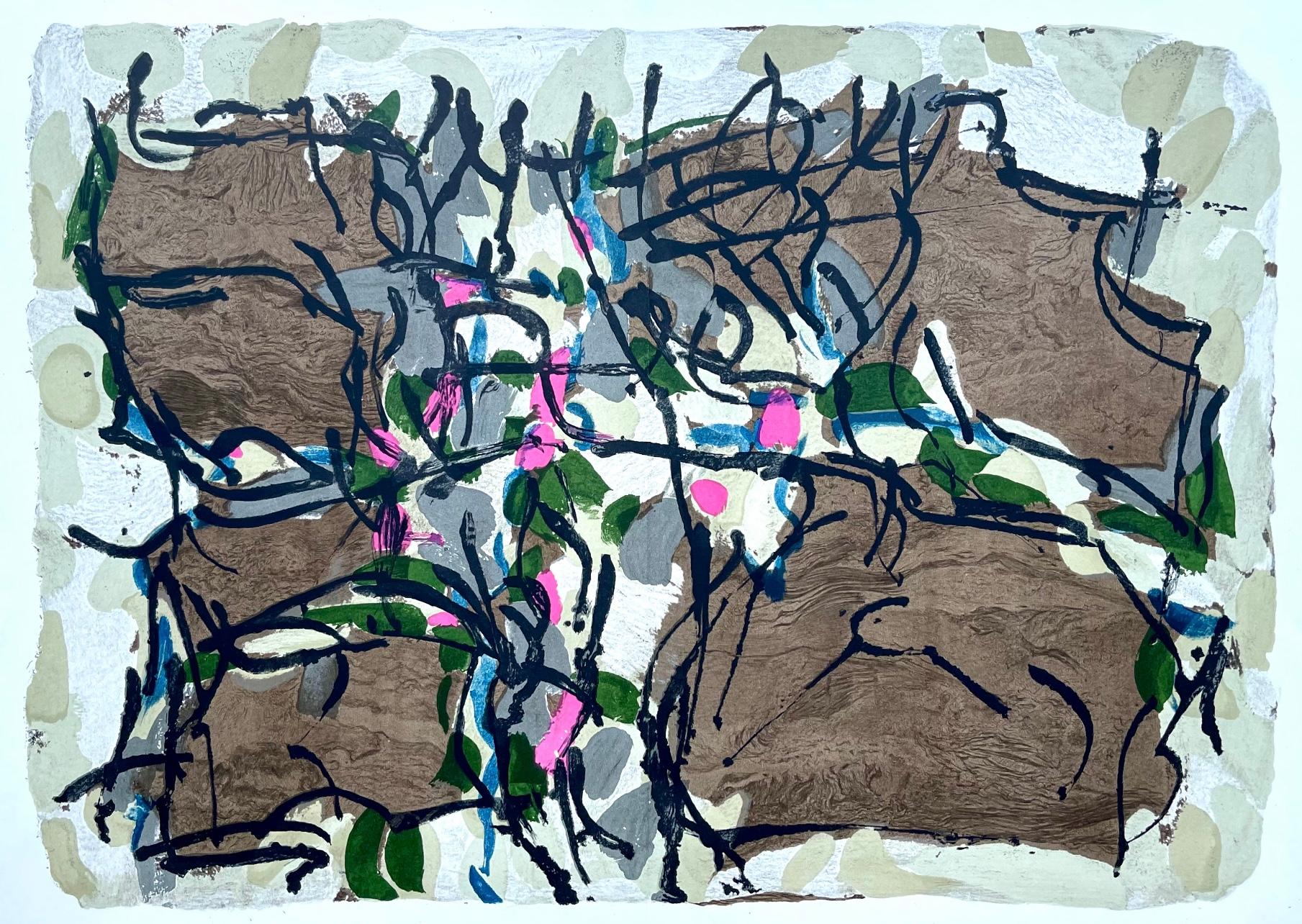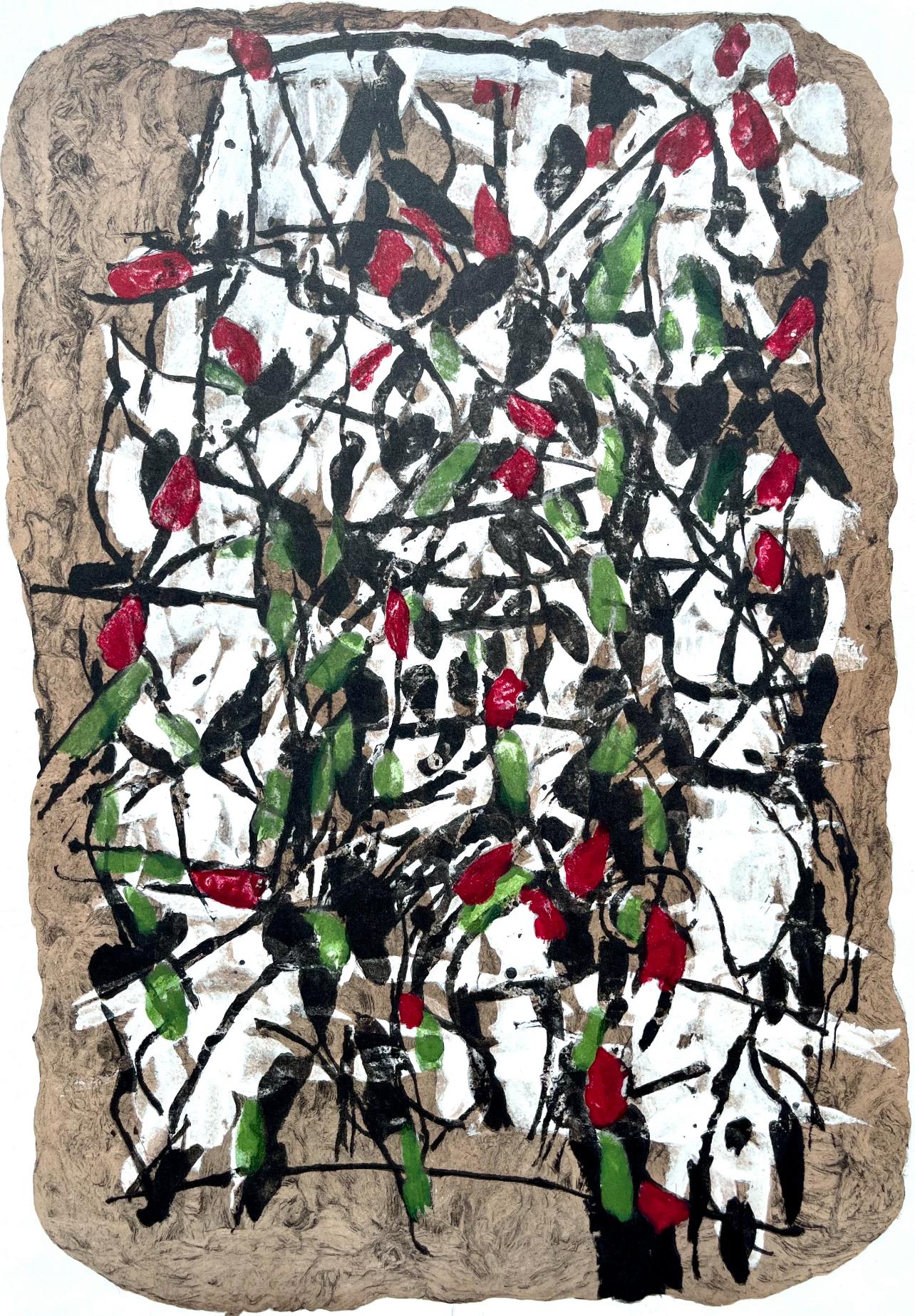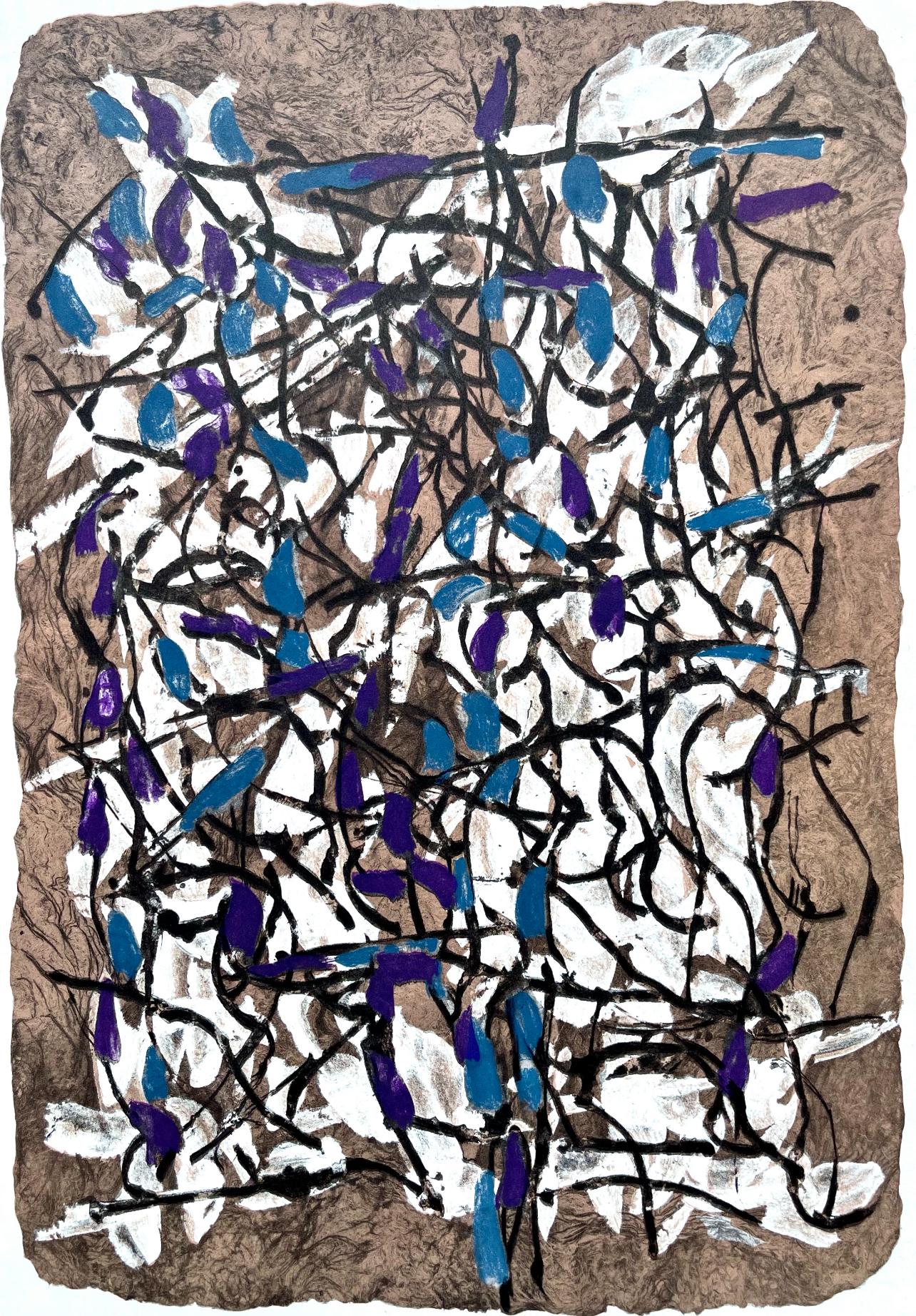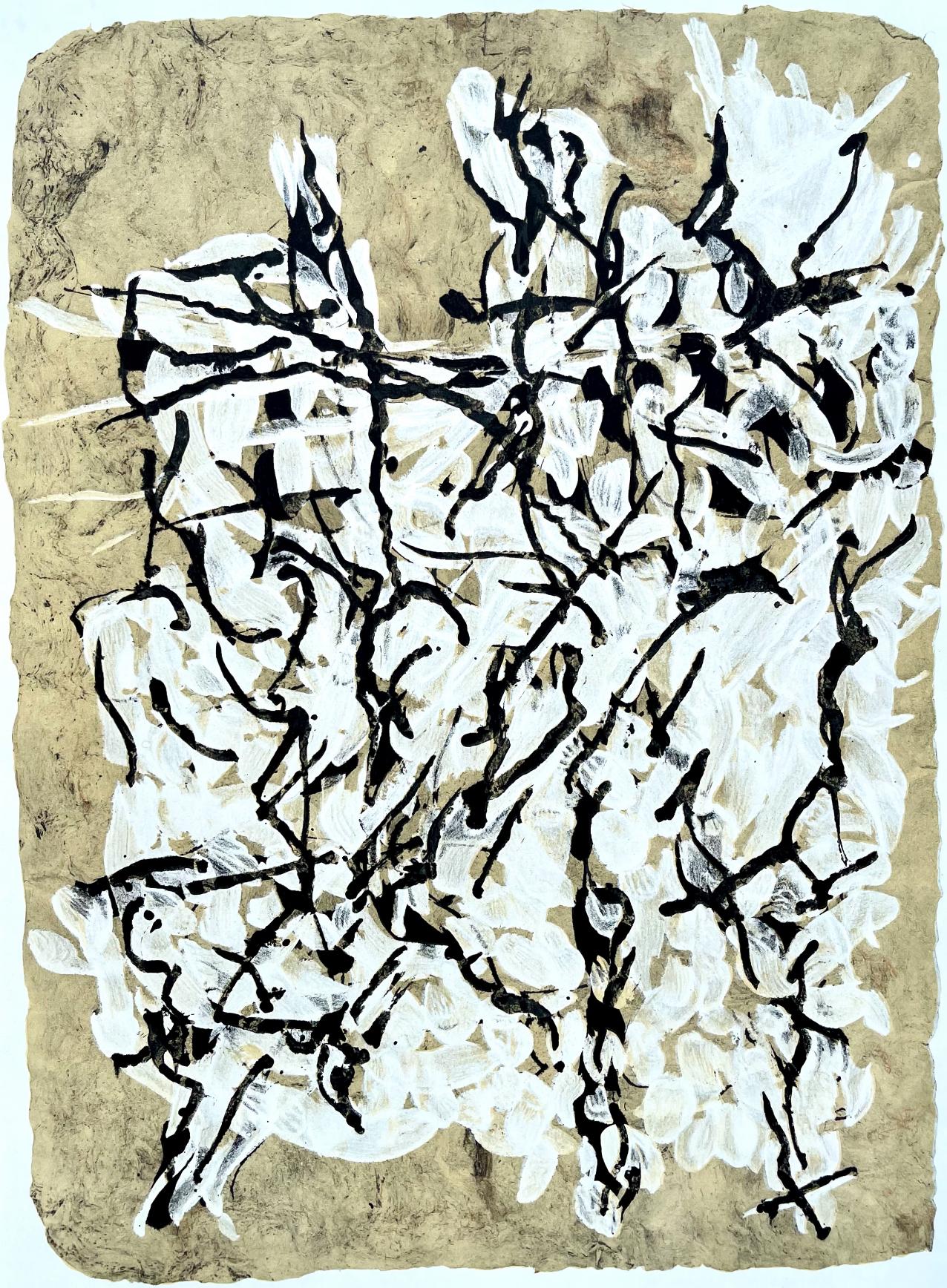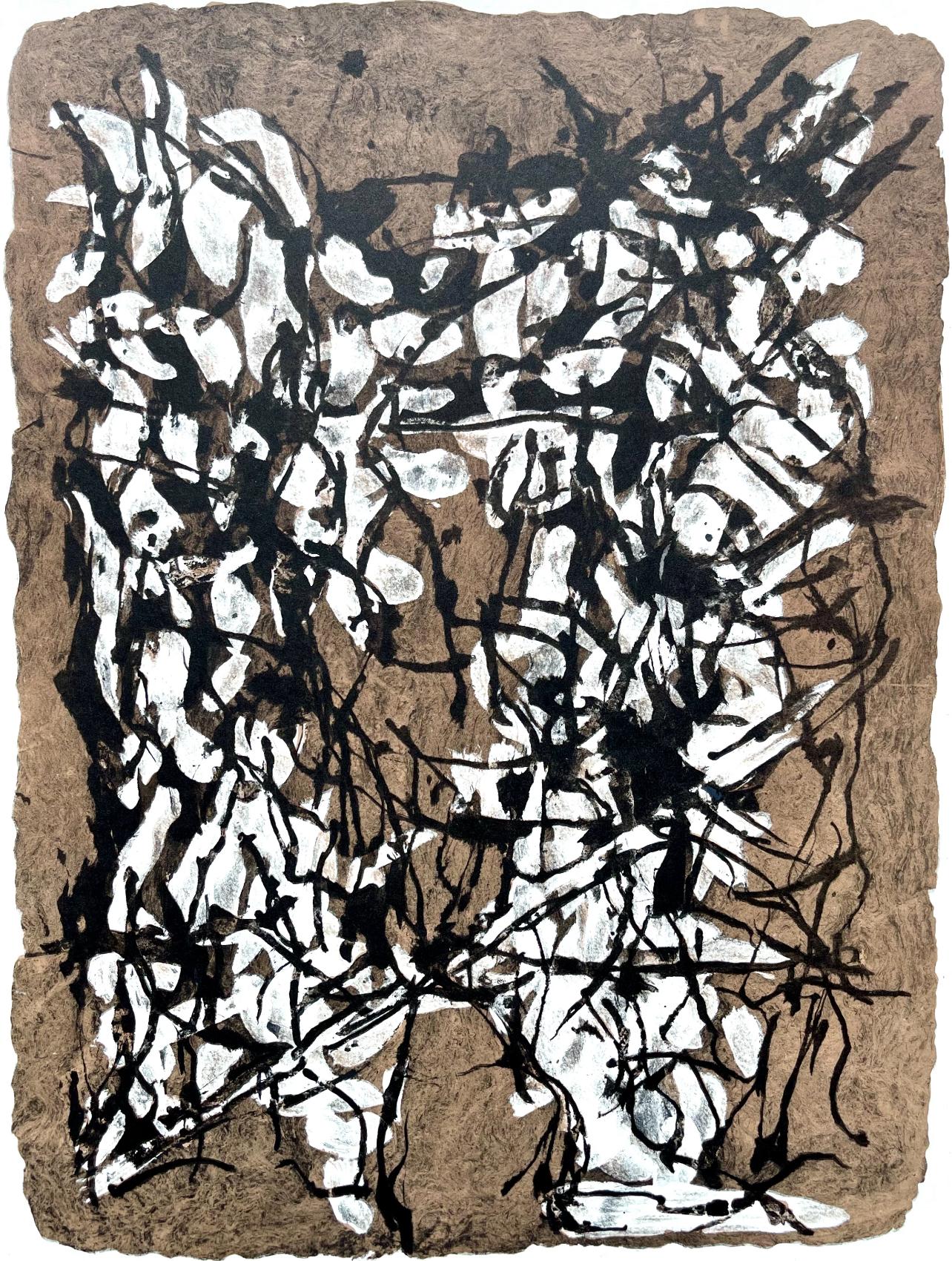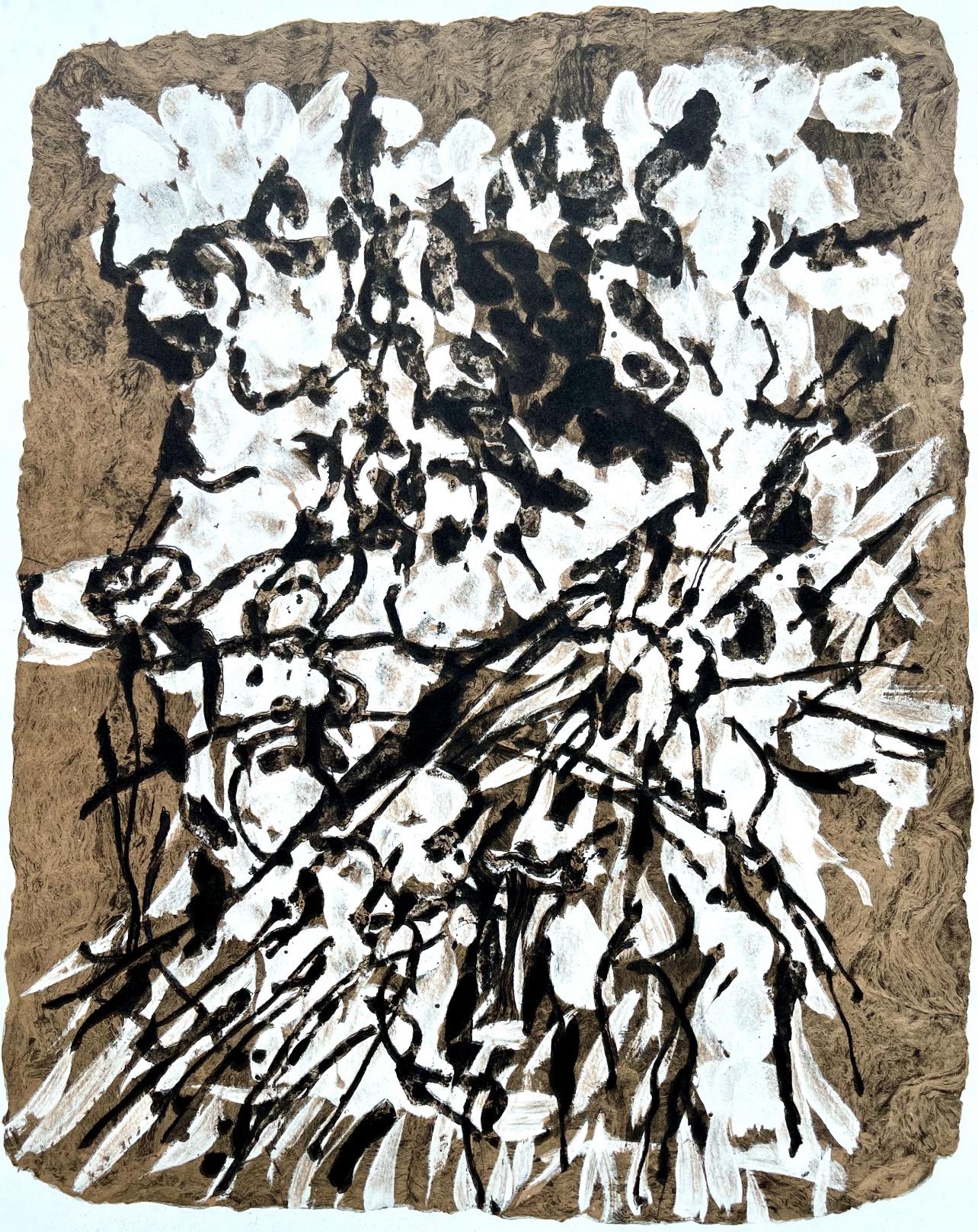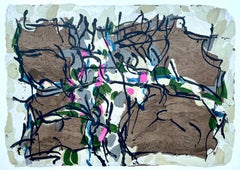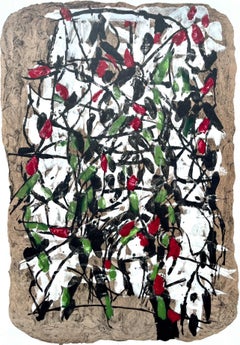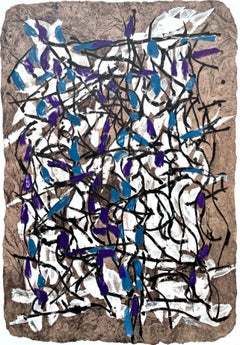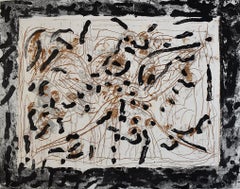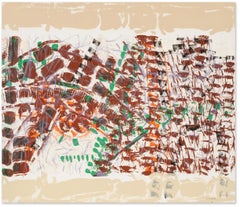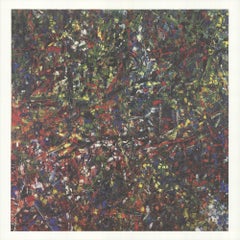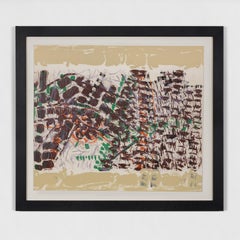Items Similar to Riopelle, Composition, Derrière le miroir (after)
Want more images or videos?
Request additional images or videos from the seller
1 of 10
Riopelle, Composition, Derrière le miroir (after)1966
1966
$716
$89520% Off
£552.14
£690.1820% Off
€629.61
€787.0120% Off
CA$1,021.16
CA$1,276.4620% Off
A$1,116.01
A$1,395.0220% Off
CHF 587.28
CHF 734.1020% Off
MX$13,367.08
MX$16,708.8620% Off
NOK 7,391.54
NOK 9,239.4220% Off
SEK 6,903.41
SEK 8,629.2620% Off
DKK 4,702.59
DKK 5,878.2320% Off
About the Item
Lithograph on vélin paper. Inscription: Unsigned and unnumbered, as issued. Good condition, with centerfold, as issued. Notes: From Derrière le miroir, N° 160, 1966. Published by Aimé Maeght, Éditeur, Paris; printed by Éditions Pierre à Feu, Galerie Maeght, Paris. Excerpted from the volume (translated from French), This issue of "Behind the Mirror" includes a luxury edition printed on vélin de Lana, and limited to 150 examples, numbered and signed by the artist. Excerpted from a Christie’s, New York lot essay, The life span of Derrière le Miroir was thirty-five years. Publication began in 1946. Aimé Maeght, initiator of Derrière le Miroir, had already made few attempts to start publications illustrated with fine printed lithographs in colours in the years prior to the launch of Derrière le Miroir. The name, Derrière le Miroir was suggested by Jacques Kober, manager of Galerie Maeght. The gallery had opened in 1945; the first number of Derrière le Miroir was released a year later. For this first issue Geer van Velde was invited to create lithographs to illustrate the publication. The lithographs in the first issue was printed by Mourlot, Paris. The first three issues of Derrière le Miroir were unsuccessful for Maeght as far as the edition size—the initial print-runs were far too large. From 30,000 for the first issue, the number was taken down to 10,000 for numbers two and three, until Derrière le Miroir number four was published in an edition of 1500. Maeght instituted a policy whereby unsold issues were recycled and used for the fabrication of new paper for the coming editions—this served to both conserve resources and also usually result in ultimate edition sizes far less than 1,500. With number four, the permanent format for Derrière le Miroir was established. Lithographs in colours were key; text was limited to comments on the featuring artist's exhibition taking place in the Galerie Maeght, and this catalogue format was defining to Derrière le Miroir. Galerie Maeght took on the leading role in Paris and presented all main artists including Braque, Matisse, Chagall, Léger, Bonnard, Chillida and many more. So too did Derrière le Miroir. The idea of a magazine was meanwhile still on the mind of Aimé Maeght. He found an insert as a solution. Two, and later four, pages of art review were inserted from 1952 onwards. In 1968 this find had ripened to independency and the dream of Aimé Maeght was now a tangible fact named l'Art vivant. Derrière le Miroir was on it's own again. Over 250 issues in a row. At that point publisher Aimé Maeght wished to make a mark with the publication of an hommage to all who once contributed to the magazine which came in the form of issue number 250, but was delayed by the death of Aimé Maeght. It was published after number 253 in 1982 and became a tribute to Aimé and Marguérite Maeght and 35 years of friendship with artists and poets. The era of Derrière le Miroir was closed with that final publication.
JEAN-PAUL RIOPELLE (1923-2002) was a Canadian painter and sculptor from Quebec. He had one of the longest and most important international careers of the sixteen signatories of the Refus Global, the 1948 manifesto that announced the Quebecois artistic community's refusal of clericalism and provincialism. He is best known for his abstract painting style, in particular his "mosaic" works of the 1950s when he famously abandoned the paintbrush, using only a palette knife to apply paint to canvas, giving his works a distinctive sculptural quality. He became the first Canadian painter since James Wilson Morrice to attain widespread international recognition and high praise, both during his career and after his death. He was a leading artist of French Lyrical Abstraction.
- Creation Year:1966
- Dimensions:Height: 15 in (38.1 cm)Width: 22 in (55.88 cm)
- Medium:
- Movement & Style:
- After:Jean-Paul Riopelle (1923-2002, Canadian)
- Period:
- Condition:
- Gallery Location:Southampton, NY
- Reference Number:1stDibs: LU1465215151532
About the Seller
4.9
Platinum Seller
Premium sellers with a 4.7+ rating and 24-hour response times
Established in 1978
1stDibs seller since 2021
1,229 sales on 1stDibs
Typical response time: <1 hour
- ShippingRetrieving quote...Shipping from: Southampton, NY
- Return Policy
More From This Seller
View AllRiopelle, Composition, Derrière le miroir (after)
By Jean-Paul Riopelle
Located in Southampton, NY
Lithograph on vélin paper. Inscription: Unsigned and unnumbered, as issued. Good condition, with centerfold, as issued. Notes: From Derrière le miroir, N° 160, 1966. Published by Aim...
Category
1960s Modern Abstract Prints
Materials
Lithograph
Riopelle, Composition, Derrière le miroir (after)
By Jean-Paul Riopelle
Located in Southampton, NY
Lithograph on vélin paper. Inscription: Unsigned and unnumbered, as issued. Good condition. Notes: From Derrière le miroir, N° 160, 1966. Published by Aimé Maeght, Éditeur, Paris; pr...
Category
1960s Modern Abstract Prints
Materials
Lithograph
Riopelle, Composition, Derrière le miroir (after)
By Jean-Paul Riopelle
Located in Southampton, NY
Lithograph on vélin paper. Inscription: Unsigned and unnumbered, as issued. Good condition. Notes: From Derrière le miroir, N° 160, 1966. Published by Aimé Maeght, Éditeur, Paris; pr...
Category
1960s Modern Abstract Prints
Materials
Lithograph
Riopelle, Composition, Derrière le miroir (after)
By Jean-Paul Riopelle
Located in Southampton, NY
Lithograph on vélin paper. Inscription: Unsigned and unnumbered, as issued. Good condition. Notes: From Derrière le miroir, N° 160, 1966. Published by Aimé Maeght, Éditeur, Paris; pr...
Category
1960s Modern Abstract Prints
Materials
Lithograph
Riopelle, Composition, Derrière le miroir (after)
By Jean-Paul Riopelle
Located in Southampton, NY
Lithograph on vélin paper. Inscription: Unsigned and unnumbered, as issued. Good condition. Notes: From Derrière le miroir, N° 160, 1966. Published by Aimé Maeght, Éditeur, Paris; pr...
Category
1960s Modern Abstract Prints
Materials
Lithograph
Riopelle, Composition, Derrière le miroir (after)
By Jean-Paul Riopelle
Located in Southampton, NY
Lithograph on vélin paper. Inscription: Unsigned and unnumbered, as issued. Good condition. Notes: From Derrière le miroir, N° 160, 1966. Published by Aimé Maeght, Éditeur, Paris; pr...
Category
1960s Modern Abstract Prints
Materials
Lithograph
You May Also Like
Composition I, from: Marrying Flies Les mouches à marier - Canadian
By Jean-Paul Riopelle
Located in London, GB
This work is hand signed in pencil by the artist "Riopelle" at the lower right corner.
It is also hand inscribed in pencil "EA" (épreuve d’artiste), at the lower left corner.
This i...
Category
1980s More Prints
Materials
Etching, Aquatint
Midi, Planche de la série "Le Sablier"
By Jean-Paul Riopelle
Located in Westmount, QC
Jean-Paul Riopelle, 1923-2002, Canadian
Midi, Planche de la série "Le Sablier", 1978-1979
Lithograph
22 x 25.5 in
56 x 65 cm
Inscriptions
Proof “HC” signed, and annotated “3” in penc...
Category
Late 20th Century Abstract Abstract Prints
Materials
Lithograph
Jean-Paul Riopelle 'Sans Titre, 1954' 2023- Vintage
By Jean-Paul Riopelle
Located in Brooklyn, NY
This limited edition reproduction captures an untitled painting originally created by Jean Paul Riopelle in 1954. Published in France and printed on heavy stock paper, this piece off...
Category
2010s Contemporary Prints and Multiples
Materials
Offset
Le Sablier 3
By Jean-Paul Riopelle
Located in Toronto, Ontario
Jean-Paul Riopelle (1923-2002) is arguably the most successful post-war abstract painter from Canada.
While Americans have traditionally favored Jackson Pollock as the most influen...
Category
1970s Abstract Expressionist Prints and Multiples
Materials
Lithograph
Le Sablier 6
By Jean-Paul Riopelle
Located in Toronto, Ontario
Jean-Paul Riopelle (1923-2002) is arguably the most successful post-war abstract painter from Canada.
While Americans have traditionally favored Jackson Pollock as the most influen...
Category
1970s Abstract Expressionist Prints and Multiples
Materials
Lithograph
Les Mouches à Marier n7
By Jean-Paul Riopelle
Located in Westmount, QC
Jean-Paul Riopelle, 1923-2002, Canadian
untitled, from the portfolio «Les Mouches à Marier» , n7 1985
Etching
19 1/2 x 26 in
50 x 66,3 cm (papier); 38 x 47,5 cm (image)
Signed lower...
Category
Late 20th Century Abstract Abstract Prints
Materials
Lithograph
More Ways To Browse
Angus Fairhurst
Antonio Zoran Music
Atelier Populaire
Augustas John
Christian Title
Cy Twombly 1979
Cynthia Carlson
Dabs Myla
Donald Sultan Blue Flowers
Ellsworth Kelly Squares
Flou Bed
Galerie Adrien Maeght
Galerie Louis Leiris
Georges Braque Galerie Maeght
Georges Vantongerloo
Grateful Dead Posters
Green Woodblock Print
Herbert Brandl
